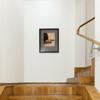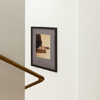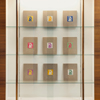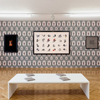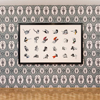Now If I Had Been Writing This Story, 2018 Click on images to view project. |
 |
 |
|||||||
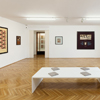 |
 |
 |
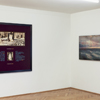 |
 |
||||
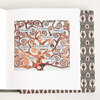 |
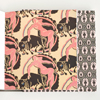 |
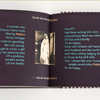 |
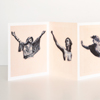 |
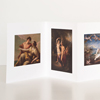 |
||||
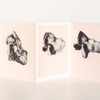 |
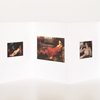 |
|||||||
Now If I Had Been Writing This Story was conceived especially for Secession in Vienna, as an installation in the Grafische Kabinett gallery space. The exhibition featured a selection of work from the past eleven years drawn from three projects—Minoan Girls, Ariadne’s Thread, and Pattern Recognition—and it debuted a new embroidery. The show’s title is taken from a Stevie Smith poem that I excerpted in I Wonder Why (2014). The ancient Greek myths are primal narratives that recite basic motivations, which has left them ever open to analysis, interpretation, and deconstruction. Originally only the gods were endowed with true agency, but in the texts I’ve chosen, each Minoan Girl is fully aware of the role she plays in the plot. No matter how much we imagine the unraveling and reconstitution of stories and motifs to be a modernist or contemporary phenomenon, it is actually a very old process. The newest work here, Toutes les filles (2016–17), departs from my fond reliance on literature, trading text for gesture. In countless images of Ariadne abandoned on the isle of Naxos, her story is told through the consistent use of a particular pose: the iconic “sleeping Ariadne,” reclining with one arm draped limply over her head. Memorialized in classical times on everything from Greek kraters to Roman frescoes, mosaics, and sarcophagi, this pose, like many other vignettes glossed from classical iconography, became formalized in post-Renaissance drawing manuals and aesthetic treatises. Matisse, Picasso, de Chirico, and other modernists were deeply familiar with this classical vocabulary of gesture, and made use of it in many of their works. The inherent theatricality of gesture also recalls the oral and performative roots of the ancient myths, which were shaped and reshaped according to the skills and proclivities of each teller or performer. In addition to its many Ariadnes, Toutes les filles features three Europas, each looking over her shoulder while clutching wind-whipped drapery. Pasiphaë and Phaedra also make cameos, but go on to star in their own respective embroideries. I was also acutely aware that the architect of the Secession building, Joseph Maria Olbrich, ornamented its massive geometric forms with classical references—from the laurel leaves that form the spherical golden dome to the wreaths, Athenian owls, and egg-and-dart motifs on the side elevations. The Latin motto emblazoned on the facade, “Ver Sacrum,” can be thought of as an allusion to the eternal fount of classical inspiration. By now, that “sacred spring” has been siphoned off into countless posters, pillows, and greeting cards derived from Gustav Klimt. But I still feel it’s possible to see a tired image in new light. Aside from an abiding faith in heroic narratives, Klimt and neoclassicism also share a kind of persistent afterlife of cyclical revival, which continually mobilizes them in the service of aesthetic, political, and social tasks that may or may not bear any real connection to the source. In the US, our founding fathers (to say nothing for the moment of our mothers) deployed a program of neoclassical architecture to demonstrate the ancient roots of their new republican government. Classical motifs act in some way as perfect vessels for ideology or as tokens of legitimacy. The wallpaper I use here reproduces an American neoclassical motif of Greek urns from the Hamilton House in South Brunswick, Maine, circa 1785, now printed in a pretty pink variation designed specifically for this exhibition. (Installation photographs: Oliver Ottenschläger)
|
